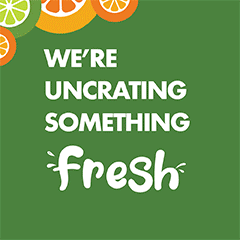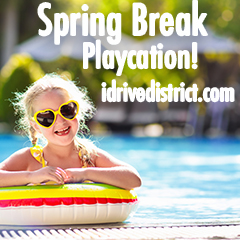10 Ways to Avoid Summer Brain Drain
 Summer is here and kids are jazzed to have a break from school and homework. However, many parents worry that their children’s brains will turn to mush between now and September. Here are a few ways to sneak in a little learning while having a great time with the kids this summer.
Summer is here and kids are jazzed to have a break from school and homework. However, many parents worry that their children’s brains will turn to mush between now and September. Here are a few ways to sneak in a little learning while having a great time with the kids this summer.
Learn cool science tricks with the “Surfing Scientist.”
At HYPERLINK “http://www.abc.net.au/science/surfingscientist/tricks.htm” abc.net.au/science/surfingscientist/tricks.htm, Australian physics instructor (and surfer) Ruben Meerman, shows kids how to amaze their friends by lifting a marble off a table while touching it only with a glass, making an ice cube necklace, turning an empty soft drink can into a twirling ballerina, and much, much more (younger kids will need assistance). Don’t forget to check out the Straw Heart Monitor; it’s super cool!
Take audio books on family car trips.
Many public libraries have a selection of audio books both on tape and on CD. One summer, my family listened to two wonderful books, Shiloh and Holes, during a family road trip. We talked about those stories for days. It was great to share the experience as a family, instead of watching our son zone out in the back seat playing video games.
Check out local museums and historical sites.
Get a map and mark the location of interesting sites, then go exploring, suggests Deb Fuller, a freelance museum educator in Alexandria, Virginia. “Kids can help navigate,” she says. “This teaches them map-reading skills, geography, and spatial relations. Even young children can learn to follow along on a map and give simple directions.”
Call in advance to see whether any special programs are scheduled for that day. Pre-teens and teens may even want to volunteer at one of these sites, Fuller adds. “I don’t know of a museum that doesn’t need some extra help. They usually welcome willing volunteers,” she says. “It’s a great way for children to learn responsibility and to give back to the community.”
Create folding paper toys.
Kids can visit The Toymaker ( HYPERLINK “http://www.thetoymaker.com” thetoymaker.com) and click on “free toys” on the home page to download full-color paper toys that they can print on sturdy paper, cut out and assemble themselves. Make a bug box, a bunny basket, a jigsaw puzzle, and more. There’s even a Tooth Fairy Gazebo!
Visit a nature park.
“These parks offer nature walks for all ages, from simple introductions to the park, to bird watching and plant identification,” says Fuller. Your family might experience native-American crafts, a guided fishing trip, or live animal encounters. Some nature parks offer stroller walks for parents with toddlers, too. Fuller points out that many nature centers also have garden plots and garden clubs for which families can volunteer to help.
Have fun with grocery-store math.
Visit HYPERLINK “http://printables4kids.com/grocery-cart-math” http://printables4kids.com/grocery-cart-math to turn a trip to the grocery store into a fun learning experience. Before you head to the store, ask the kids to use the printable worksheet to estimate prices for the items on your list. Once there, have them check out the actual price for each item. Then, have them tap into their math skills as they calculate the difference between the estimated price and the real price. (And talk about a great way to teach kids the importance of family budgeting. With the price of groceries these days, you’d think Lucky Charms cereal would come with a real pot of gold!)
Document the family vacation.
Older kids can use a digital camera to record vacation memories, then download the photos into the family computer. Show them how to make prints and create a scrapbook or let them create a multi-media presentation with computer software, showcasing the photos and adding music, titles, etc. Burn CDs to send to family and friends.
Check out bookstores and libraries for free summer programs.
“On Saturday mornings in the summer, I take my boys to our local Barnes & Noble for their programs for different age groups, which usually include an author reading, activities and fun,” says Candace Reese of Kennesaw, Georgia.
Take younger kids to the post office.
Talk with your children about “snail mail” and how it’s different from e-mail. Tell them about the Pony Express (visit the Pony Express National Museum website at ponyexpress.org) and the different ways mail is delivered today — by plane, train, boat, etc., suggests Don Schilling, editor of The Stamp Collecting Round Up at HYPERLINK “http://stampcollectingroundup.blogspot.com” http://stampcollectingroundup.blogspot.com. “Let your child pick out some stamps he or she thinks are interesting. When you get home, write a letter together and use one of the stamps your child selected,” Schilling adds. Help your child start a stamp collection.
Visit hands-on history days and historical re-enactments.
Kids can try their hand at living like their ancestors by churning butter, making candles, learning how to spin and knit, using historical tools, and meeting living-history interpreters who dress in period clothing, says Fuller. “I’ve seen kids get sucked into history this way,” she states, noting that children have fun poking cloves into oranges to make pomanders or shaking little jars of cream to make butter.
Compare the cost of a day at such an event, which can run around $20 for a family of four, with the cost of an amusement park or even movie tickets. Fuller predicts that you’ll get a lot more educational bang for your buck and have some memorable family fun in the process.








